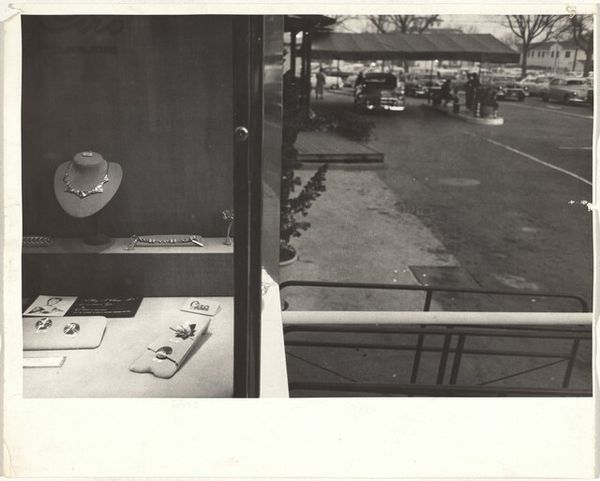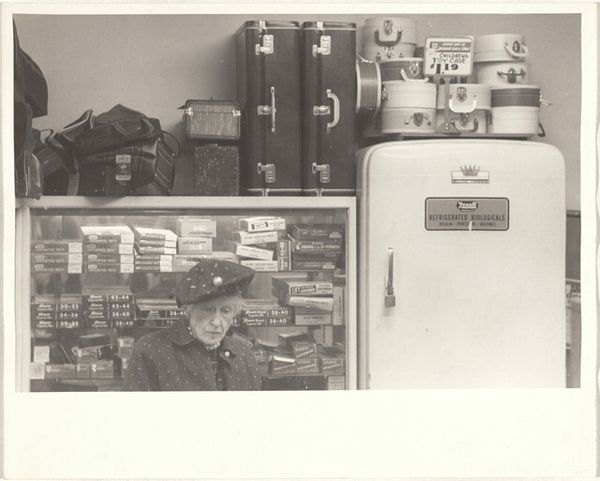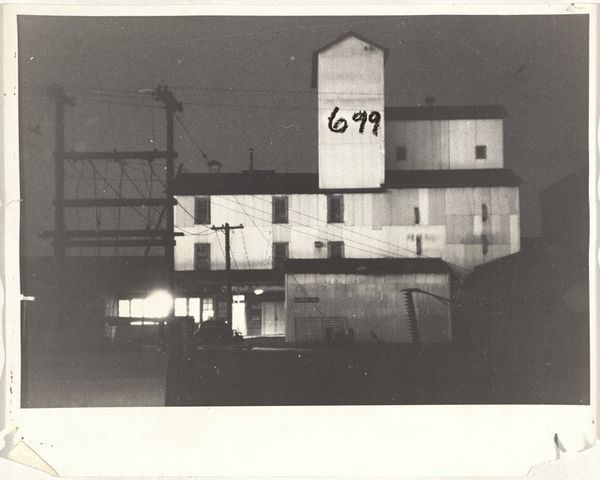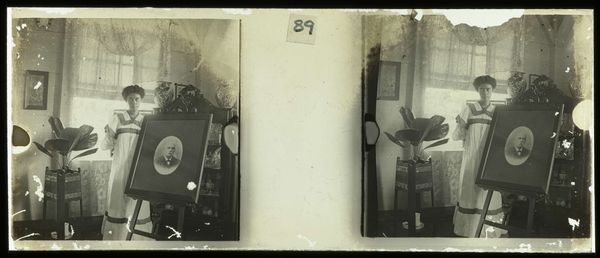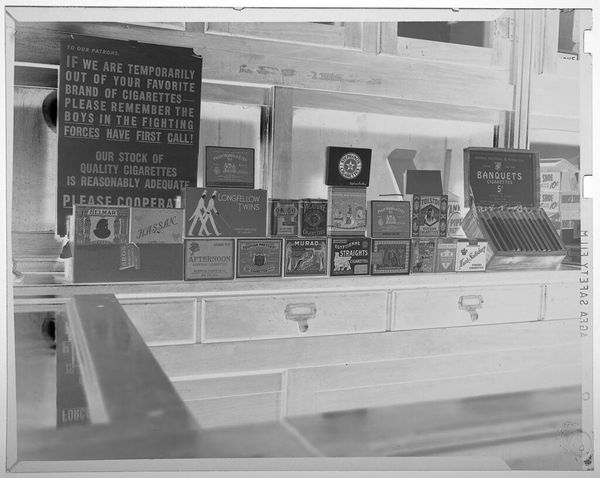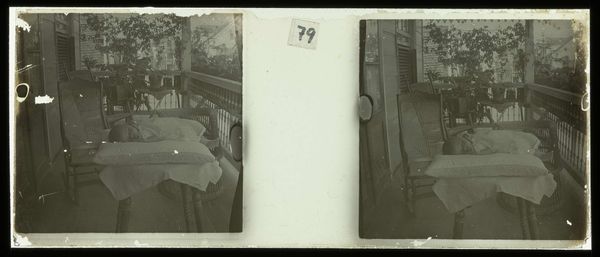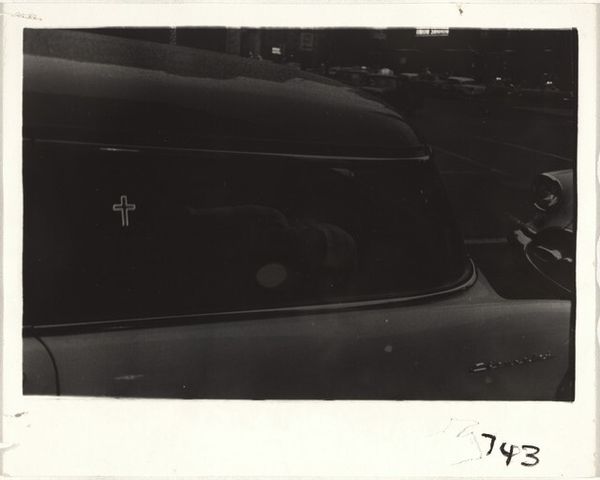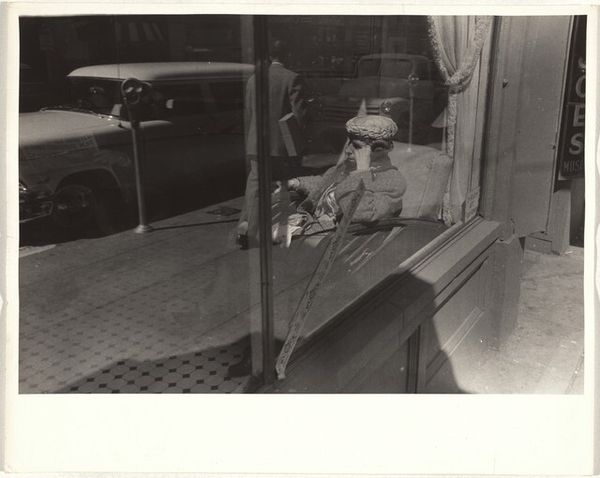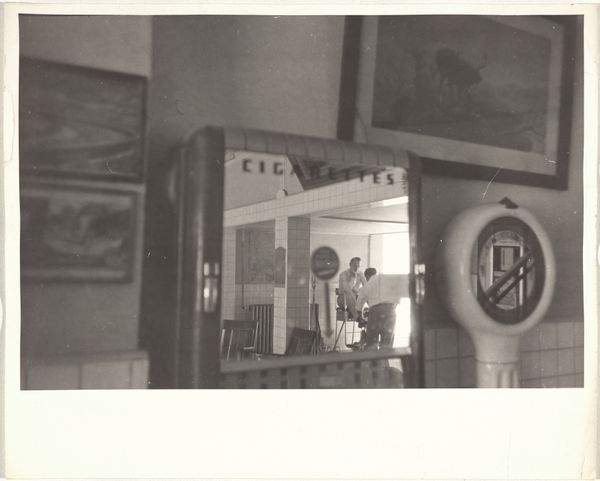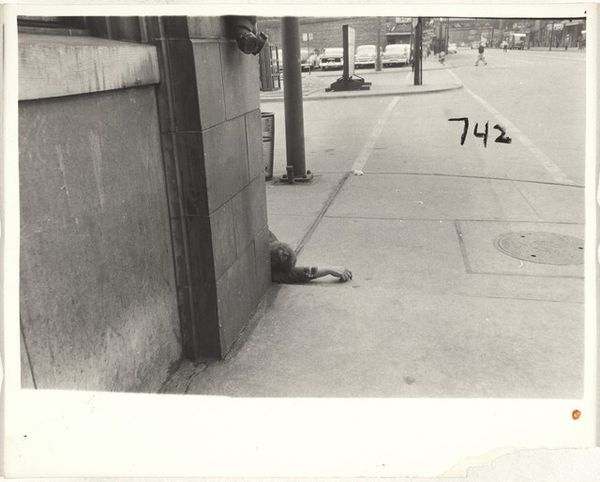
Dimensions: sheet: 20.3 x 25.3 cm (8 x 9 15/16 in.)
Copyright: National Gallery of Art: CC0 1.0
Curator: Here we have Robert Frank’s photograph, “Department store—Lincoln, Nebraska” from 1956. The image, rendered as a gelatin silver print, offers a glimpse into a moment of mid-century American commercialism. Editor: My initial sense is stark—almost clinical. The light is flat, and there's something profoundly sad about the mundane presentation of grief. White crosses, mass-produced, priced at just 69 cents. It's consumerism confronting mortality. Curator: Absolutely. Frank often focused his lens on the subtle dissonances within American society, and here he captures this almost transactional approach to remembrance. Consider the medium itself: the gelatin silver print, capable of rendering incredible detail, used here to depict… inexpensive memorials. Editor: It makes me think about labor, actually. The materials – the paper pulp, the chemicals, even the cardboard boxes – each a node in a vast, often unseen network of production and consumption. What kinds of jobs are represented here? How were these things made and distributed, and what did that mean for the people involved? Curator: And that sign – "Remember Your Loved Ones." It reduces genuine emotion to a purchase. Does it cheapen the act of remembrance, or make it more accessible to those of limited means? Frank leaves us to wrestle with that tension, doesn't he? The composition, with the neat stacks and the generic typeface, reinforces this sense of detached commerciality. Editor: It's the context that unsettles me. The post-war boom years. Abundance and optimism… paired with these rows of potential memorials. A sort of pre-packaged grief. Even the blue annotation at the top right, some kind of store code or tally, brings the banality into even sharper relief. Curator: The choice of black and white is interesting too, right? It’s a practical choice for the time, of course, but it further distances us, intensifying the somber atmosphere, creating a visual metaphor for loss and absence. It allows us to observe these "loved ones" from a perspective that would never happen without such a clear medium choice, to analyze every texture and emotion in complete isolation. Editor: I agree. It’s a layered photograph, far beyond a simple snapshot of a department store display. A commentary on American values, perhaps even on our complicated relationship with death itself, all filtered through Frank’s unique and slightly detached gaze. A gaze both poignant and unsettlingly commercial. Curator: Indeed. It reminds us that art can reveal uncomfortable truths hiding in plain sight, compelling us to confront the ordinary, in a new light. Editor: Leaving us questioning the very structures that frame our daily rituals. Food for thought for sure, if perhaps bitter.
Comments
No comments
Be the first to comment and join the conversation on the ultimate creative platform.

